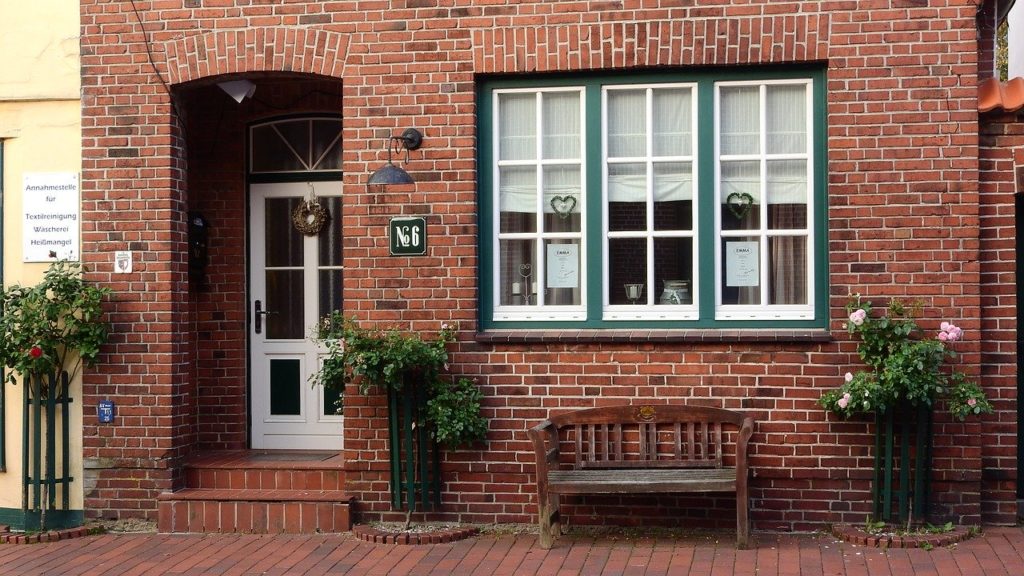The typical settlement in Germany: long rows of solid stone houses. But increasingly the ranks are thinning out in favor of wooden houses. Often in wooden houses we come across architectural styles that we know from Scandinavian countries – the Swedish house. Or on rustic log cabins, as they are in Bavaria. But there are also idiosyncratic creations made of wood, which do not follow any template.
It is necessary to clarify the advantages and disadvantages of wooden and solid houses.
The wooden house
For the definition of the wooden house is crucial that it has a load-bearing wooden frame (timber frame construction). This may also be the case with houses with brick facades. There are different methods of construction of wooden houses: wooden post and beam, log or half-timbered houses. Differences lie both in style and construction. For example, a log house is built entirely of wood, while in a half-timbered house often only the frame is made of wood.
The advantages of wooden and solid house at a glance
In the following table we have clearly summarized and compared the most important advantages of the two types of houses for you:
| Advantages wooden house | Advantages solid house |
| shorter construction time – lower construction costs | better soundproofing properties |
| many building styles possible – from traditional to modern | Lower negative influences due to weather conditions |
| lower weight – suitable also for difficult ground conditions | Robust and insensitive – fewer maintenance measures |
| Self-regulating insulation properties – lower heating costs | Mostly higher value on resale |
| Positive effects possible when applying for government subsidies | Refurbishment / maintenance often less costly |
| More sustainable – better ecological balance, as often regional and natural | Material less sensitive to pest infestation |
| Good indoor climate – suitable for allergy sufferers and asthmatics | Attachments easier to realize |

We would now like to take a closer look at the most important advantages and disadvantages of wooden and also solid houses. It should be mentioned in advance that both styles of construction have important advantages and disadvantages, and the decision to choose one of the two types of houses should be considered by each builder individually.

Advantages wooden house / Disadvantages solid house
- The construction time of a wooden house is less than the construction time of a comparable solid house – this saves costs.
- Wood is versatile. Whether it is a prefabricated house, a kit house, a solid log house or even an architect’s house – with wood a lot is possible, from traditional to very modern appearances.
- Wooden houses can be built even in very difficult soil conditions due to their light weight. They do not require a particularly high load-bearing capacity of the soil. Here you can find more about soil surveys and subsoil investigations.
- Wooden houses require less heating energy. Because the building material wood has very good self-regulating insulation properties with low space consumption. Despite thin walls, hardly any energy penetrates outside in winter and heat penetrates inside in summer. This is due on the one hand to the physical properties of wood as a natural building material, and on the other hand to the sophisticated constructions that are possible with this building material. This means that the requirements for a state subsidy from the KfW development bank can be met. Although a high insulating effect can also be achieved with brick buildings (e.g. through double-shell construction), considerably more effort and higher costs must be expected here.
- Wood is a sustainable building material and often comes from regional stocks. It is not for nothing that prefabricated house manufacturers advertise that a wooden house grows back every 10 to 60 seconds (the figures vary here). But bricks are also a natural building material, which can ideally be installed without major travel distances. Nevertheless, the ecological balance of wood as a building material is better. Here you can find more about ecological building.
- Health benefits: Wood construction is proven to be beneficial to the health of allergy and asthma sufferers. Wood can absorb and release moisture (open-pored structure), so the climate is independently regulated to 45-55% humidity. This creates a health-promoting environment and has a calming effect on the respiratory system. Of course, good values for the indoor climate can also be achieved in brick buildings. This is especially the case with masonry interior walls, because bricks can also absorb and release moisture from the air. However, the cost of a completely masonry house is significantly higher, and the positive impact on the indoor climate is less.
For more information on the subject of wooden house read our article.

Disadvantages wooden house / advantages solid house
- The solid house has better soundproofing properties than the wooden house. In a wooden house you will always hear more than in a solid house – both from your fellow occupants and from noises outside. The best location for a wooden house is certainly not on a busy road.
- Wood is more affected by weathering than is the case with a solid house. If the color of the facade does not change and the house should be maintained, it is necessary to regularly apply varnish (depending on the type of house every 4-8 years).
- Solid houses have the reputation, not without reason, that they are particularly robust and insensitive. For example, in the event of major water damage, a brick wall is easier to restore than a wooden house. This is because a wooden wall is more difficult to forgive moisture penetration – more extensive renovation is required here.

- The resale value is often higher for a brick building than for a wooden house. However, very well-made wooden houses are not necessarily at a disadvantage in terms of resale value and durability.
- If during the construction of a wooden house is not built to the highest quality standards, it can lead to comparatively large consequential damage . For example, if standing water occurs in the house due to construction errors, this can severely damage the building material wood. Renovation of wooden houses can be very costly.
- In addition, a wooden house is more susceptible to vermin and mold infestation, which requires appropriate regular treatment of the materials. If the wrong materials are selected for surface treatment, this in turn can lead to harmful vapors. However, with proper treatment, this problem can be solved satisfactorily.
- Additions are more difficult to carry out in a wooden house than in a solid house.
- Wood is a natural building material that undergoes certain movements throughout the year. It is also called that the building material wood works or log houses settles. This is not necessarily a disadvantage, but this particular feature must be taken into account if, for example, new lines are to be laid or other major construction work is to be carried out. Margins must always be factored in .
- Possibly, a few creaky spots show up in a wooden house. Nothing has yet been reported about a creaking brick in a solid house.
Which is better? Wooden house or solid house?
Unfortunately, a blanket answer as to whether a wooden house or a solid house is the better choice cannot be provided. Both construction methods offer different peculiarities and thus also different advantages and disadvantages, as shown here. Thus, in the end, it also depends on very individual expectations and preferences to decide for or against the construction of a wooden house.
The fact is that today about 15% of all new buildings are wooden houses. The trend is increasing for good reasons. And it is not only the lower cost compared to a comparable solid brick house. In particular, today’s pronounced ecological awareness, a good living atmosphere and health benefits . Of course, the lower construction and heating costs of a wooden house are also a valid argument. In addition, it is also advantageous that a wooden house is completed and ready for occupancy much faster. Also, the notion that solid houses are always more robust, durable and stable value, than houses made of wood this is wrong – for example, a high-quality log house compared to the stone house with regard to these attributes is by no means at a disadvantage.
Nevertheless, anyone who has already lived in a solid house for a long time will have to get used to a wooden house all over again. This is due, for example, lower soundproofing properties and different measures of maintenance that make a wooden house. Also, the cracking of the planks during the settlement of a log house may seem strange – but the settlement process should be completely finished after 4 years. For others, the cracking and ggfs. creaking of some places in the house, in turn, something beautiful. Because in this way the house reminds us that it is made of natural building materials.
In the final analysis, the decision between a wooden house and a solid house is made solely by the builder and his family. It is best to spend a few nights in a wooden house once to assess the living atmosphere first hand. Many providers actually offer such trial living. Take advantage of this – after that, a decision will certainly be easier for you. Also, a detailed consultation with professional construction companies and a detailed calculation of costs may help you decide for or against a wooden house.
For this purpose, also use our free prefabricated house calculator and get an overview of the expected costs of your building project. Almondia is at your disposal with expert knowledge in all areas of house construction.



